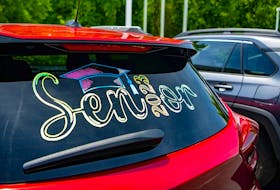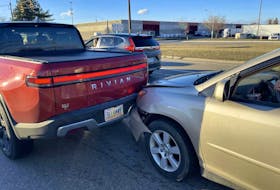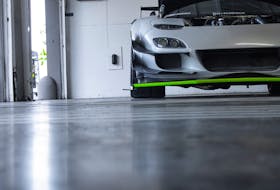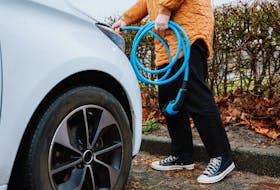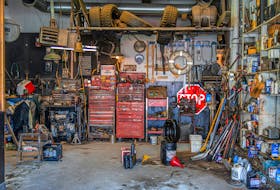By Dale Edward Johnson
The little brother of the Ford’s full-size F-150 pickup has returned.
When Kid Ranger rode off into the sunset eight years ago, most people figured that was the end of the road for the small, low-priced pickup.
But now the Kid is back — and bigger than he used to be, although still not as big as his big brother F-150.
So why would Ford, after getting rid of the Ranger in 2011, bring it back in 2019?
“A lot has changed since we exited the segment. We’ve seen a lot of growth in the mid-size pickup segment, so we’ve re-entered the segment with the Ranger,” Joseph Comacchio, Ford of Canada’s product marketing manager for the F-150 and Ranger, told me.
The Ranger is back to do battle with the likes of the Chevrolet Colorado, GMC Canyon, Nissan Frontier and Toyota Tacoma.
Ford didn’t have to start from scratch, because although the Ranger disappeared from North America in 2011, a revised Ranger has been sold in other countries all this time. Worldwide, the Ranger is the second-best selling mid-size truck behind the Toyota Tacoma. Ford brought this Ranger to North America earlier this year. It’s bigger than the Ranger of old, which was introduced in 1983.
The full-size F-150 has been Ford’s top-selling vehicle in Canada for decades. In the first six months of this year, F-150 sales were up four per cent in Canada, with almost 75,000 units sold.
So why would Ford offer a smaller version?
“Our target customer for the Ranger is someone who would like a truck, but perhaps doesn’t need the capability and size of a full-size truck. That’s usually someone who lives in a city and maybe has parking restrictions. But on weekends, they may want to be able to pack up a truck with adventure gear, whether they kayak, mountain bike or camp, and so on,” says Comacchio.
There are other reasons why people are attracted to mid-size pickups.
When off-roading, smaller can be better, because it can be easier to navigate tight spots and steep hills.
And some tradespeople and farmers who need a pickup may not need the hauling capacity of a full-size truck and want something that takes up less space and drinks less gas.
The Ranger comes in just one size, but two body styles — depending on whether your priority is hauling people or stuff. The SuperCab has a six-foot box and a small seating area behind the front seats. The SuperCrew has a five-foot box, but more room for rear passengers, with four doors and full-size back seat. Both models sit on a 3220-millimetre wheelbase and are 5355 mm long.
Compared to a regular two-door F-150, the Ranger is actually 39 mm longer, but is 114 mm lower and 280 mm narrower. But when comparing four-door SuperCrew versions, the Ranger is 535 mm shorter than the F-150.
Ford recently invited automotive journalists to try out the new Ranger — first on the Sea-to-Sky highway from Vancouver to Whistler, and later at an off-roading course (made up of old mining and logging roads) a short drive from Whistler.
The Ranger’s smaller size obviously makes it easier to park and navigate than the F-150, especially in the city.
Out on the Sea-to-Sky highway, I found the empty Ranger provided a smoother, more car-like ride than F-150s I have driven. The ride is comfortable, it’s roomy and the visibility is good. Typical driver assist technologies are available, including Automatic Emergency Braking, Lane Keeping System, Blind Spot Information System and Adaptive Cruise Control.
Off-road, the Ranger is very capable, and was at home wading across creeks and going up and down narrow, rocky steep grades. A terrain management system, with a selector on the console, offers a choice of four driving modes: grass/gravel/snow, sand, mud/ruts and normal.
The FX4 Off-Road Package adds protective skid plates, upgraded tires, and shocks and suspension designed for off-roading. Trail Control is sort of a low-speed cruise control – from 1.6 km/h to 32 km/h – to enhance off-road climbing and descending. This manages vehicle acceleration and braking by sending power and braking to each individual wheel, while the driver can focus on steering.
While Ranger’s competitors offer both four- and six-cylinder engines, the Ranger comes with just one engine, a 2.3L four-cylinder EcoBoost.
It produces 270 horsepower, which provides plenty of power for passing on the highway. And the 310 pound-foot of torque is the best in class among gas engines. Economy is rated at 11.8 L/100 km in the city and 9.8 L/100 km on the highway.
All Rangers are four-wheel-drive and have 10-speed automatic transmission. Rangers have a best-in-class towing capacity of 3402 kg (7500 pounds) and a payload capacity of 748 kg (1650 pounds) for the SuperCab and 707 kg (1560 pounds) for the SuperCrew.
The Ranger is available in three trim levels, starting with the XL at $31,069; there’s the midline XLT, and finally the top-end Lariat SuperCrew, which starts at $42,389. When options are added to a Lariat — including such goodies as larger 18-inch aluminum wheels, spray-in bedliner, splash guards, running boards, trailer towing package and premium paint — the price can to more than $50,000.
Dale Edward Johnson is a member of the Automobile Journalists Association of Canada. The test vehicles were supplied by Ford of Canada, and the automaker did not review or approve this article before publication.
Copyright Postmedia Network Inc., 2019

